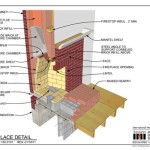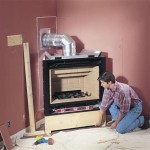Dry Stack Stone Fireplace Veneer: A Guide to This Popular Design Trend
Dry stack stone fireplace veneer, also known as dry-laid stone, has become an increasingly popular choice for homeowners seeking to add a rustic, natural, and elegant aesthetic to their living spaces. This distinctive technique involves arranging natural stone pieces without the use of mortar, creating a visually striking and texturally intriguing focal point. Dry stack stone is versatile, fitting seamlessly into various architectural styles, from traditional to contemporary, and can be incorporated into both indoor and outdoor spaces.
The Appeal of Dry Stack Stone Veneer
Dry stack stone veneer possesses a unique allure that sets it apart from traditional mortar-based installations. This distinctive approach offers several advantages:
- Natural Beauty: The absence of mortar allows the natural texture and color variations of the stone to shine through, showcasing the inherent beauty of the material. This creates a more organic and less polished look.
- Versatile Design: Dry stack stone can be arranged in various patterns and configurations, enabling homeowners to create a unique and personalized fireplace aesthetic. The lack of mortar also allows for more flexibility in the design process.
- Ease of Installation: While professional installation is recommended, dry stack stone is relatively straightforward to install compared to traditional stone veneers. Its simplicity makes it a viable DIY option for experienced home renovators.
- Timeless Elegance: Dry stack stone's timeless appeal transcends passing trends, ensuring that the fireplace remains stylish for years to come.
- Thermal Efficiency: The air gaps between the stones provide excellent insulation, helping to maintain a comfortable temperature in the room. This can lead to lower energy consumption and costs.
Types of Stone Suitable for Dry Stack Applications
Not all stone types are suitable for dry stack construction. The ideal stone should possess certain characteristics:
- Flat Surfaces: The stones should have relatively flat surfaces to ensure stability and a clean aesthetic.
- Consistent Size and Shape: Stones of a similar size and shape facilitate a uniform and visually appealing arrangement. However, some variation in size and shape can add to the natural beauty of the design.
- Strong and Durable: The stone must be strong enough to withstand the weight of the stones above it, particularly in taller or wider fireplace installations.
- Water Resistance: If the fireplace is located in a humid environment, the stones should be water-resistant to minimize the risk of damage or mold growth.
Popular stone types for dry stack fireplaces include:
- Fieldstone: Found in nature and possessing a rustic charm, fieldstone offers a diverse range of sizes and shapes.
- Flagstone: This flat, durable stone is commonly used for pathways and patios, but it also works well as a dry stack veneer.
- Slate: A naturally split stone, slate offers a distinctive layered appearance and comes in a variety of colors.
- Limestone: Limestone is a popular choice for dry stack applications thanks to its warm, earthy tones and its ability to withstand weathering.
Installation Steps for Dry Stack Stone Fireplace Veneer
While professional installation is typically recommended, the process of installing dry stack stone veneer is relatively straightforward and can be completed by experienced DIY enthusiasts. Here's a general overview of the steps involved:
- Prepare the Fireplace: Clean the fireplace surface and ensure it is structurally sound. Apply a moisture-resistant barrier if the fireplace is located in a humid environment.
- Install a Support Structure (Optional): For larger or more complex fireplace designs, a support structure may be necessary. This can be made from wood or metal and will help to distribute the weight of the stones.
- Arrange the Stones: Start at the bottom of the fireplace and gradually work your way up, ensuring that the stones are arranged in a visually appealing and stable manner. Use shims or spacers to create gaps between the stones, allowing for proper drainage and ventilation.
- Secure the Stones: Once the arrangement is satisfactory, secure the stones in place using a durable adhesive, such as construction adhesive or epoxy. You may also use metal pins or clips for added stability.
- Finish: Once the adhesive has dried, clean the stone surface and apply a sealant to protect it from moisture and stains.
Remember, these are general guidelines, and specific installation techniques may vary depending on the type of stone, the size and shape of the fireplace, and the overall design aesthetic. Consulting with a professional stone mason or contractor is always recommended for complex installations.

Dry Stack Vs Mortar Joints The Cultured Stoners

Dry Stack Vs Mortar Joints The Cultured Stoners

Dry Stack Stone Veneer Fireplace Traditional Living Room Chicago By Hx Home Solutions And North Star Houzz Ie

Dry Stack Stone Veneer Fireplace Traditional Living Room Chicago By Hx Home Solutions And North Star Houzz
.jpg?strip=all)
Tips And Tools For Professional Stacked Stone Fireplaces

Dry Stacked Stone Fireplace Fireplaces Remodel Designs

Dry Stacked Stone Fireplace With Raw Edge Cypress Mantel Fireplaces Surround Corner

Black Bear Mountain Stone Veneer Stack Midnight

Stone Fireplace Design And Remodel

Surface Dry Stack Ledgestone Series For Modern Design








